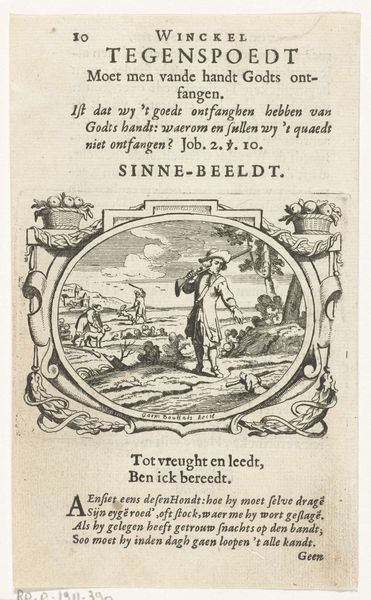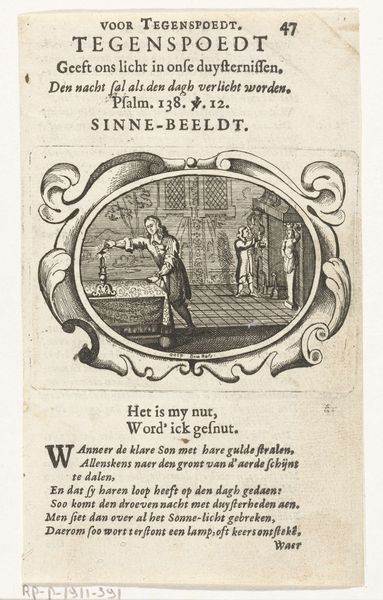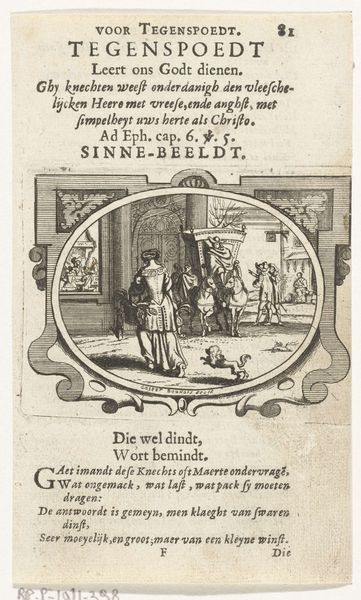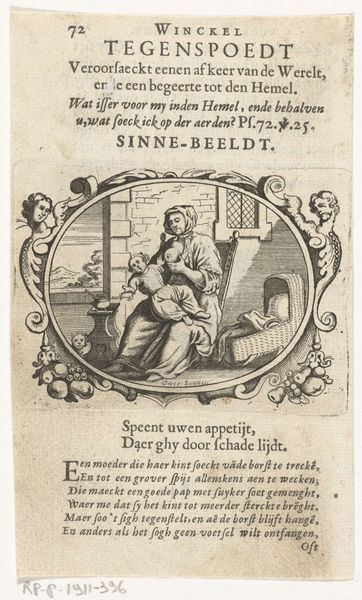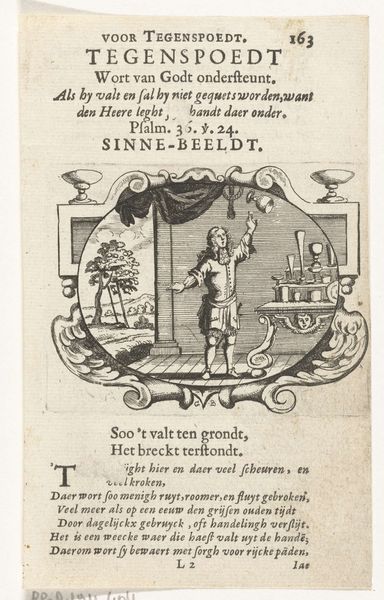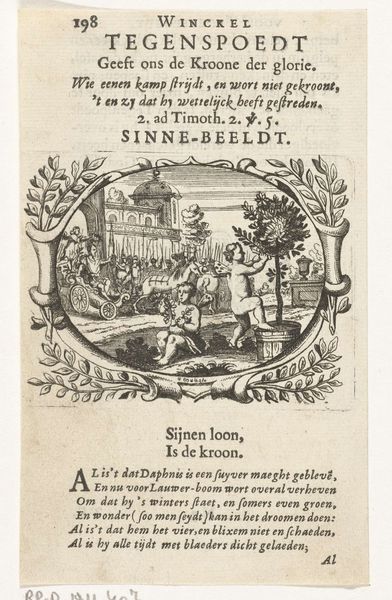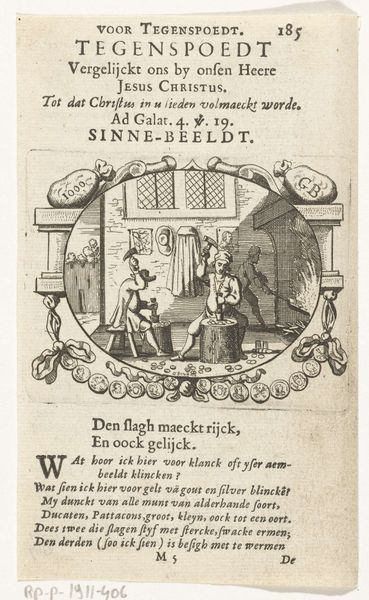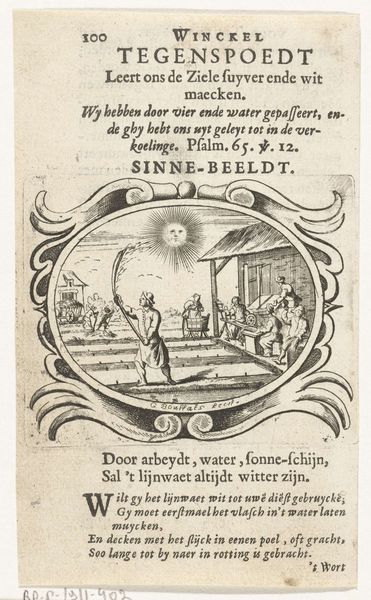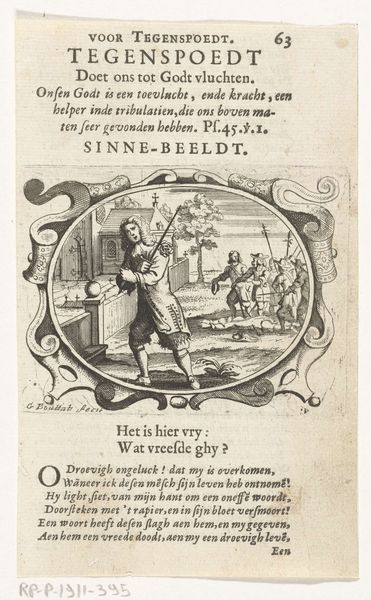
print, engraving
#
narrative-art
#
baroque
# print
#
old engraving style
#
history-painting
#
engraving
Dimensions: height 142 mm, width 86 mm, height 62 mm, width 82 mm
Copyright: Rijks Museum: Open Domain
Curator: Let’s explore this print by Gaspar Bouttats, created in 1679. It's titled "Tegenspoed maakt de ziel zuiver," which translates to "Adversity Cleanses the Soul." It’s an engraving held in the Rijksmuseum collection. Editor: My first thought is: toil. There's an undeniable sense of laborious action and relentless effort radiating from the figures and their futile gestures in the scene. It evokes a bleakness that's almost visceral. Curator: Precisely. The central image presents workers diligently striking and cleaning what appears to be hides. This laborious act of purification through adversity resonates deeply with a prominent symbol within the cultural psyche of the time: it conveys how challenging experiences can refine and purify our character, mirroring the alchemical concept of spiritual purification through tribulation. Editor: Right, there's a strong socio-political edge here, too. Think about the period in which Bouttats created this; life in 17th-century Europe was relentlessly brutal. The relentless manual labour speaks directly to the experiences of the working classes. This engraving makes no attempt to romanticize hardship. Curator: It certainly reinforces a strong Calvinistic work ethic. The text included directly cites Proverbs from the Bible and reinforces this interpretation, further framing hard work as a virtuous path, but the key element to acknowledge here is that it has more symbolic intention. It isn't just representing a moment in time, but illustrating the psychological path to purging sin. Editor: But let's not overlook how gender and class intersect in the representation of labour. While the figures could be construed as gender-neutral, the context implies that those depicted are male labourers performing harsh work under often unforgiving systems. What is that work providing them in return, truly? Curator: Well, in a visual and metaphorical sense, their efforts bring society forward, but looking beyond the obvious reading, the artist's purpose goes well past pure labour—this symbolism is entrenched in earlier spiritual philosophy, in line with ideas of refining faith that existed since early iconography, thus solidifying core beliefs for the observer of the engraving. Editor: Indeed, perhaps seeing this engraving offers insight into social ideologies, into not only how hardship may shape us but also the way oppressive forces shape the experiences we are granted or denied, depending on factors of our being. Curator: I see what you mean, there’s a dialogue there, with a much larger story, than a first impression might suggest. Editor: Yes, and sometimes seeing things as clearly is what adversity can also bring.
Comments
No comments
Be the first to comment and join the conversation on the ultimate creative platform.
